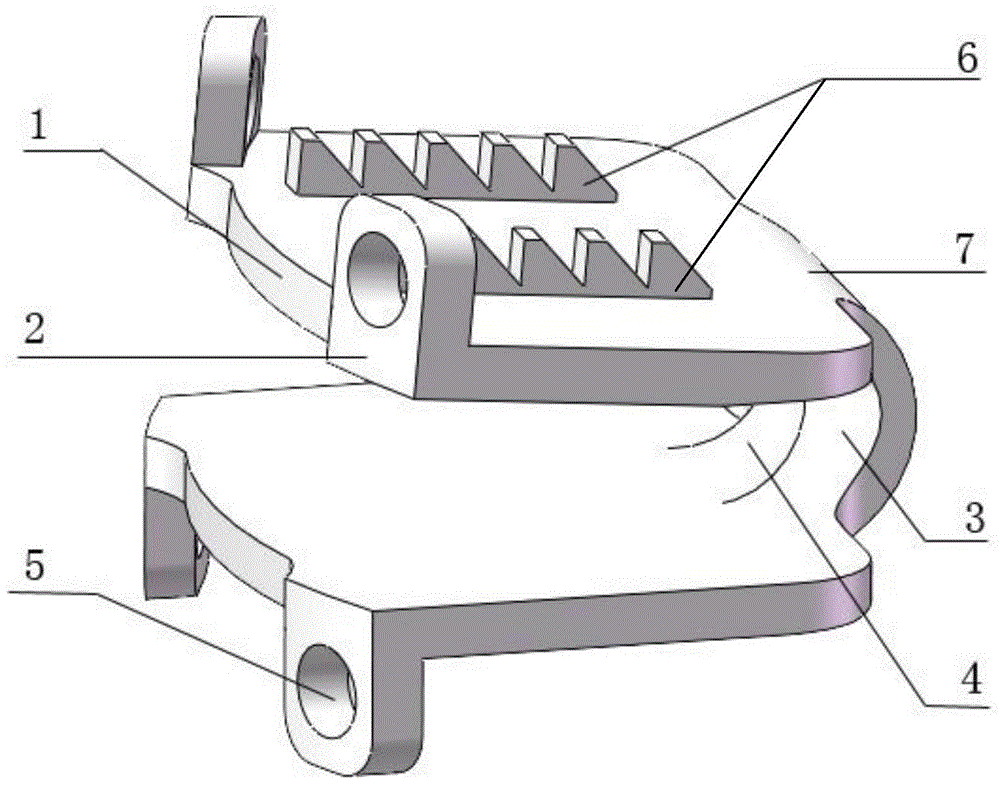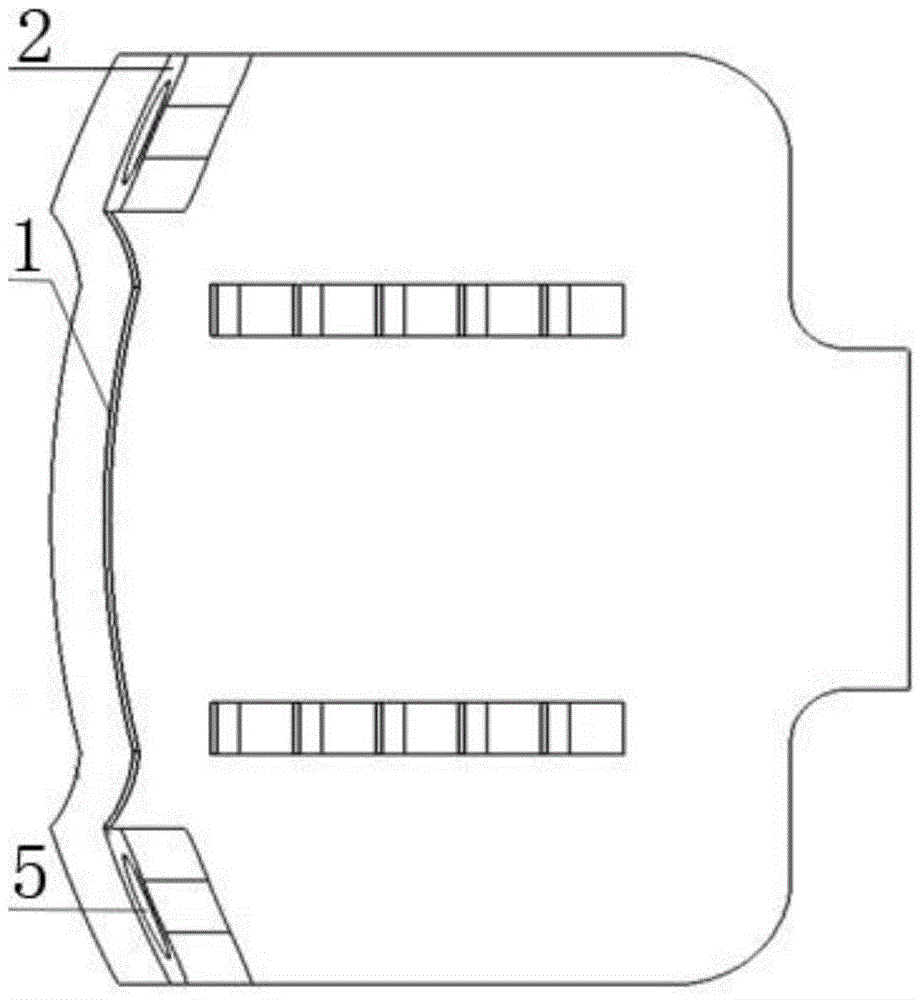Artificial cervical intervertebral disc based on bending section with reversed U-shaped structure having like-trapezoidal section
A cervical intervertebral disc, trapezoidal cross-section technology, used in spinal implants and other directions, can solve problems such as increased surgical difficulty and patient pain, lack of bolts, easy to cause heterotopic ossification, etc., to meet the long-life anti-fatigue performance and prevent wear and tear The generation of particles, the effect of improving the mobility
- Summary
- Abstract
- Description
- Claims
- Application Information
AI Technical Summary
Problems solved by technology
Method used
Image
Examples
Embodiment 1
[0034] Embodiment 1: Before the artificial cervical intervertebral disc body (7) of the present invention adopts an omega-shaped structure with a trapezoidal cross-section based on the curved section, the patient's cervical spine is subjected to discectomy and the upper and lower vertebral bodies are polished, and then According to the sagittal and transverse diameters of the patient's cervical vertebrae, an artificial cervical intervertebral disc with the following specifications was selected: the depth of the lower end plate was 16 mm, the width was 17.8 mm, the physiological curvature of the upper and lower end plates was 5°, and the overall height of the rear end was 6 mm. The distance between the front edge (1) of the artificial cervical intervertebral disc body (7) and the end surface of the bolt hole (2) is 0.8mm. The width is 6.5mm, the dimension of the smallest section thickness (9) is 0.7mm, the dimension of the smallest section width (10) is 3.2mm, the radius of the ...
Embodiment 2
[0041] Embodiment 2: Before the artificial cervical intervertebral disc body (7) of the present invention adopts an omega-shaped structure with a trapezoidal cross-section based on the curved section, the patient's cervical spine is subjected to discectomy and the upper and lower vertebral bodies are polished, and then According to the sagittal and transverse diameters of the patient's cervical vertebrae, an artificial cervical intervertebral disc with the following specifications was selected: the depth of the lower end plate was 16 mm, the width was 17.8 mm, the physiological curvature of the upper and lower end plates was 3°, and the overall height of the rear end was 6 mm. The distance between the front edge (1) of the artificial cervical intervertebral disc body (7) and the end surface of the bolt hole (2) is 0.6mm, and the rear end of the end plate adopts a circular arc profile; The width is 7.5mm, the size of the smallest section thickness (9) is 0.2mm, the size of the s...
Embodiment 3
[0045] Embodiment 3: Before the artificial cervical intervertebral disc body (7) of the present invention adopts an Ω-shaped structure with a trapezoidal cross-section based on the curved section, the patient's cervical spine is first subjected to discectomy and the upper and lower vertebral bodies are polished, and then According to the sagittal and transverse diameters of the patient's cervical vertebrae, an artificial cervical intervertebral disc with the following specifications was selected: the depth of the lower end plate was 14 mm, the width was 15.8 mm, the physiological curvature of the upper and lower end plates was 5°, and the overall height of the rear end was 5 mm. The distance between the front edge (1) of the artificial cervical intervertebral disc body (7) and the end surface of the bolt hole (2) is 1mm, and the rear end of the end plate adopts a circular arc profile; 10mm, the dimension of the smallest section thickness is 0.65mm, the dimension of the smallest...
PUM
 Login to View More
Login to View More Abstract
Description
Claims
Application Information
 Login to View More
Login to View More - R&D
- Intellectual Property
- Life Sciences
- Materials
- Tech Scout
- Unparalleled Data Quality
- Higher Quality Content
- 60% Fewer Hallucinations
Browse by: Latest US Patents, China's latest patents, Technical Efficacy Thesaurus, Application Domain, Technology Topic, Popular Technical Reports.
© 2025 PatSnap. All rights reserved.Legal|Privacy policy|Modern Slavery Act Transparency Statement|Sitemap|About US| Contact US: help@patsnap.com



